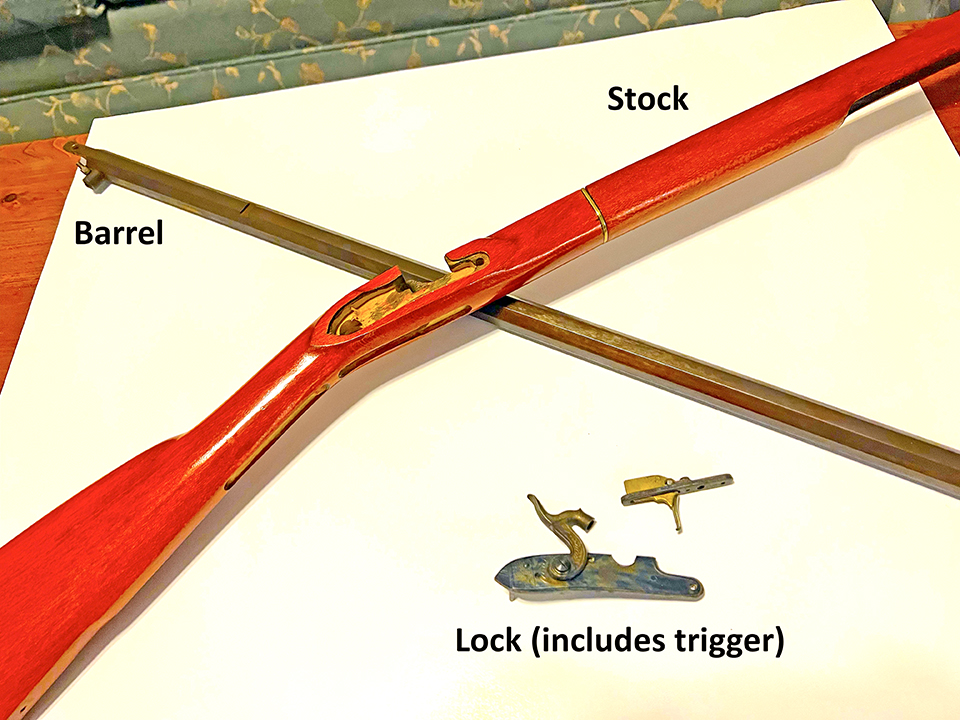Home on the Range
 By MARJ LAW
“We’re going to wait ‘til it’s dark, then we’re going to build a campfire and we’re going to tell ghost stories!”
By MARJ LAW
“We’re going to wait ‘til it’s dark, then we’re going to build a campfire and we’re going to tell ghost stories!”
“Ooooh!” we kids would shiver in fear. “Ghost stories!”
The very term “ghost” was enough to scare us and make us wonder if we’d be able to sleep that night.
Recently, we’ve been hearing a lot about ghost guns. The very term is frightening. Can ghost guns slip into our bedrooms and shoot us while we’re asleep? Or, even worse, will we hear a bump in the night while we clutch our teddy bears in fear and wait for the ghost gun to shoot us in the dark?
What is this fearsome creature: the “ghost” gun?
A ghost gun is one that a person assembles himself. Guns you purchase today have serial numbers and are tracked by our government.
“The self-manufacture of arms is deeply rooted in American history,” said FPC Law’s Director of Constitutional Studies, Joseph Greenlee. “It has been a celebrated tradition since the earliest colonial days, it helped save America’s war for Independence, it was essential to western expansion, and it has led to many of the most innovative technological breakthroughs in our nation’s history.
How is it that self-manufacturing came about? Years ago, Joe spied a double-barreled muzzle loading shotgun for sale in Maine.
I’m only selling it because I want to buy a Ford F150 pickup,” says a young man.
“But let me tell you about it. I know, because my grampa told me. Back in the 1800s, some of the very best gun barrels were made in Liege, Belgium. My great great great saved his money to get this then top of the line gun. He liked to shoot deer and duck. He said he needed this partic’lar gun to take care of food for his family, but what the family said, is that he was a great shot and didn’t need it: he just really wanted it.
So, he wants the Liege barrel. These barrels were considered the best. Guys spent all their lives making barrels, and passed their work down to their sons. This is all many families in Liege did. For generations, they were barrel makers. They were paid by the piece, and the wages were good. To make the barrels, they used charcoal iron and steel. They used to be made of steel. But now, with the Damascus twist, they used 30 sheets of iron and steel, of 4 millimeters thick, and welded them together. Each barrel got 150 welding beats. Liege workers made about 300,000 barrels. Then they were sold to be mounted. You didn’t buy the whole gun made up in one piece back then. Someone made the barrel, someone else the stock and a third person did the lock or you could find someone to do both lock and stock. That’s where you get the saying ‘lock, stock and barrel.’
Now, my great great great knew a gunsmith a few towns over. This guy was well known and had a talent for engraving. Great great great didn’t need fancy engraving to shoot better, but he’d already spent a bunch on it and decided to go whole hog. He called it his ‘best gun.’ So, he gets it all engraved. See? Purty, huh?”
Phillip Remaker on Quora.com agrees. “In the early days of firearms manufacturing, individual craftsman made individual components one at a time. One craftsman made the “lock” which would have been a “match lock”, “wheel lock”, “flint lock” etc. The next craftsman made the barrel, and the last craftsman, who was a woodworker made the stock. At some point, a craftsman or a merchant started advertising “Lock Stock and Barrel” meaning that you could get your entire gun at one location and did not have to go from craftsman to craftsman to get it finished.”
The Hawkens brothers in the early 1800s were one of the most popular manufacturers of guns already assembled. Until this time period, when you wanted a muzzleloader or rifle, you went to the woodworker, the lock maker and the barrel maker. You would be making a complete gun. When someone utilizes the term: lock stock and barrel, they are referring to a complete job, like buying all the parts needed to complete your gun.
In those days, you have made what might be termed a ghost gun.
Today, when you go to a gun shop, your new gun will be put together. It will have a serial number which is tracked by the government. However, if you want and if you’re able, you are still able to purchase the lock, stock and barrel to make your own gun. This will have no serial number.
It frightens some people to know that our government cannot track all guns. “Ghost gun” is a term used to inspire fear in people who do not understand America’s long tradition of self-manufacturing guns.
People who made their own “ghost” guns fought for and won our independence. “Ghost” is a term that belittles the men and women who died to keep our country free.
Marj Law is the former director of Keep Wakulla County Beautiful who has become an avid shooter in retirement.
